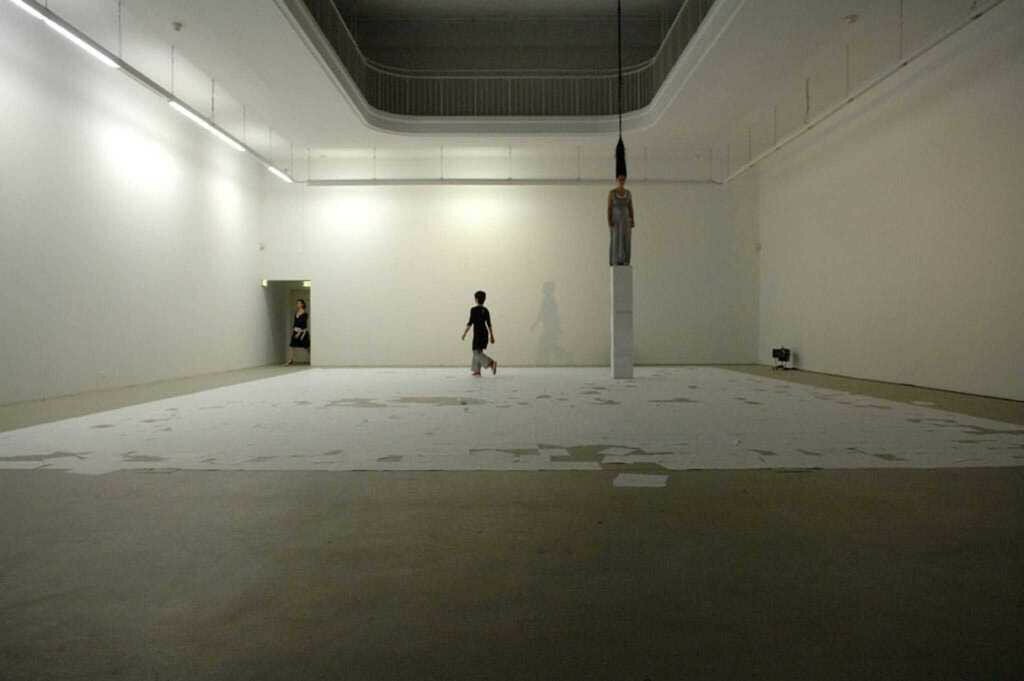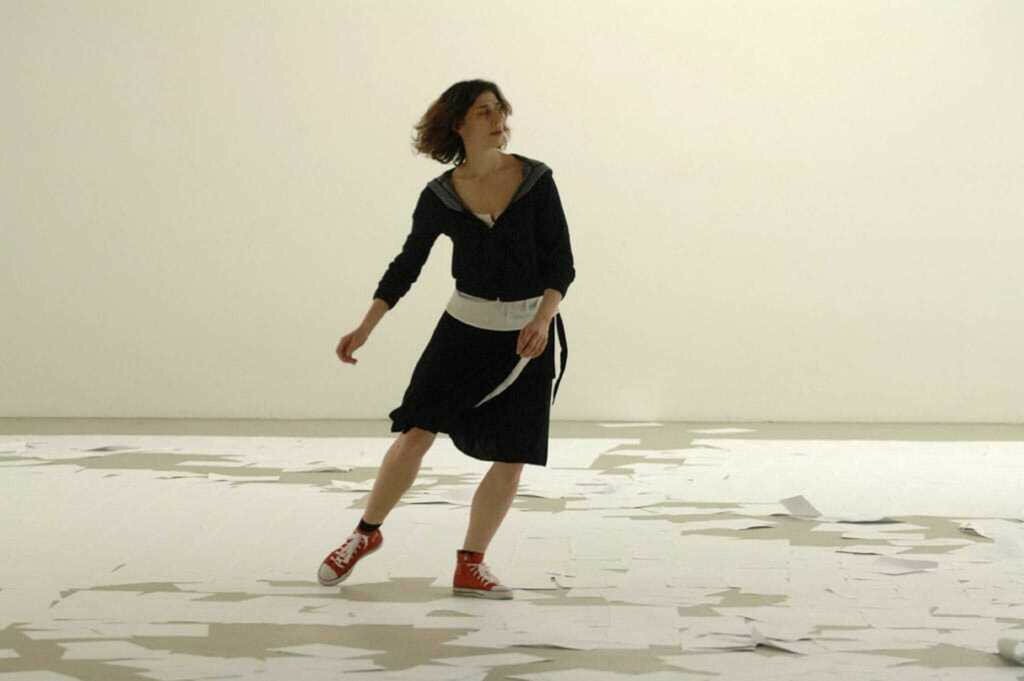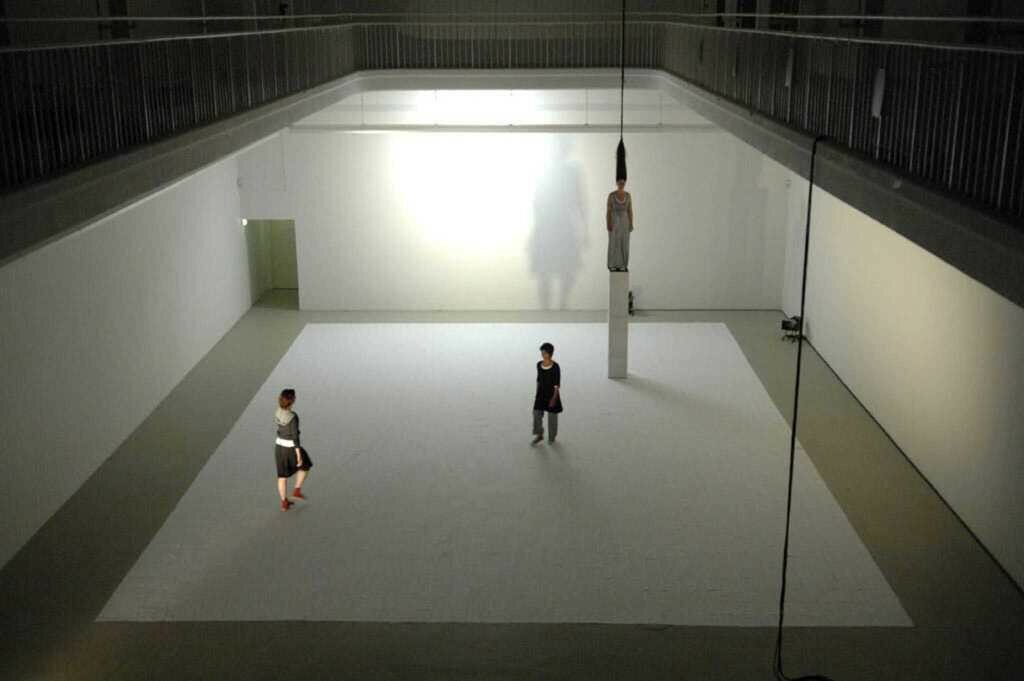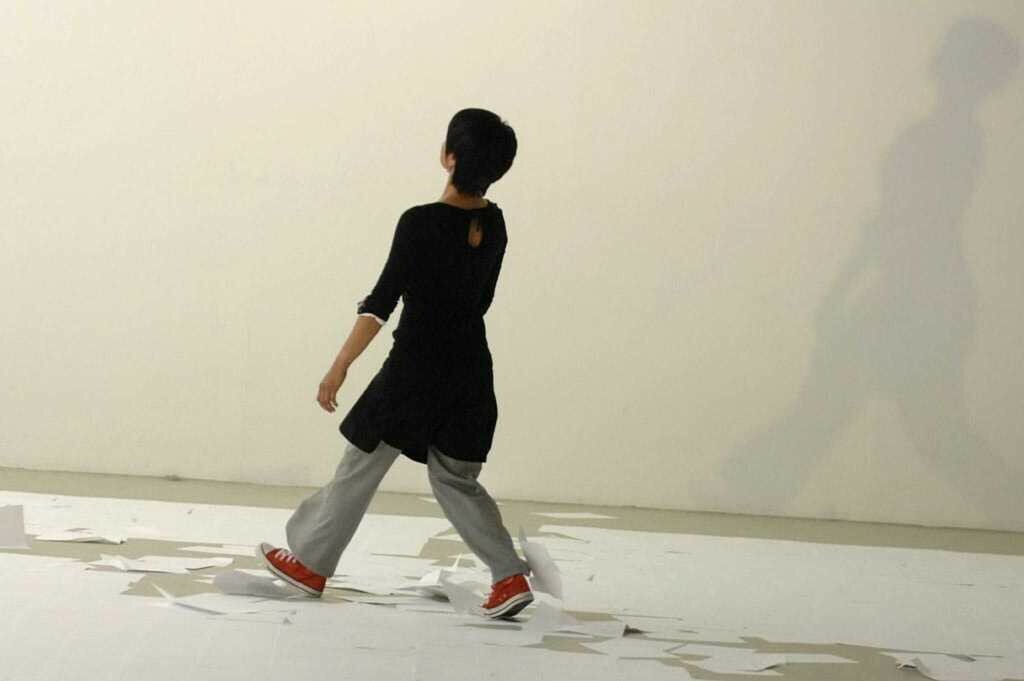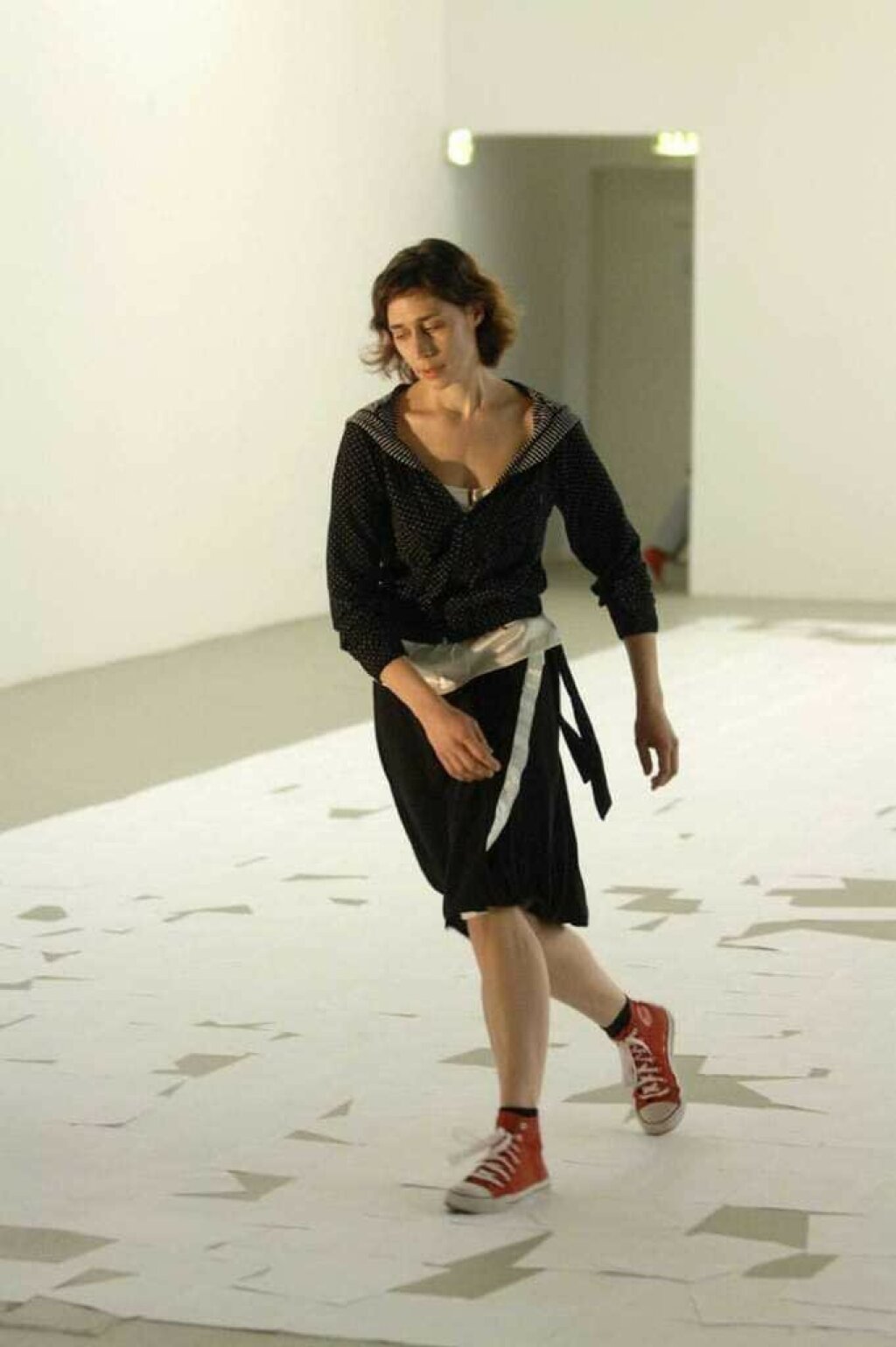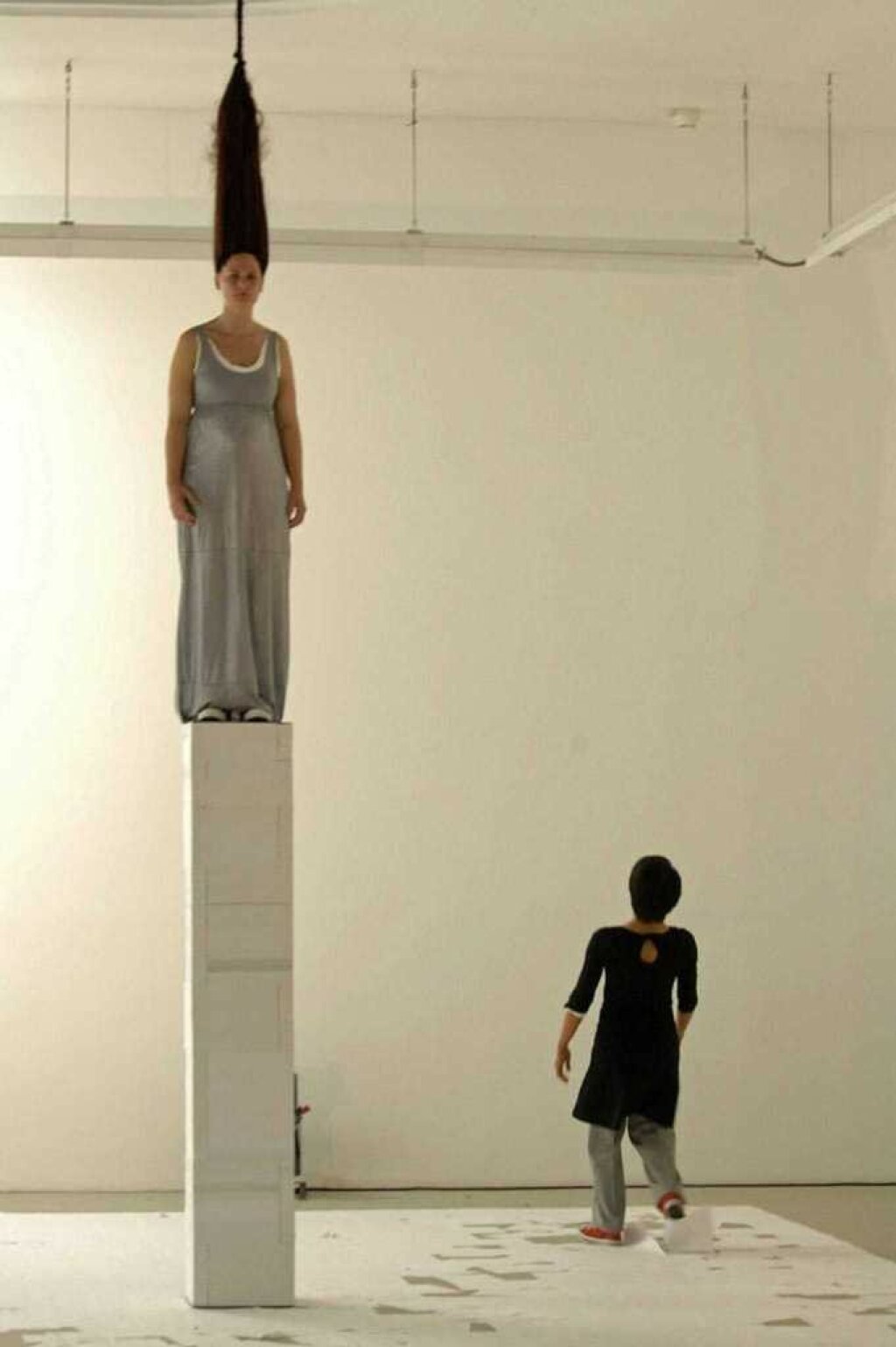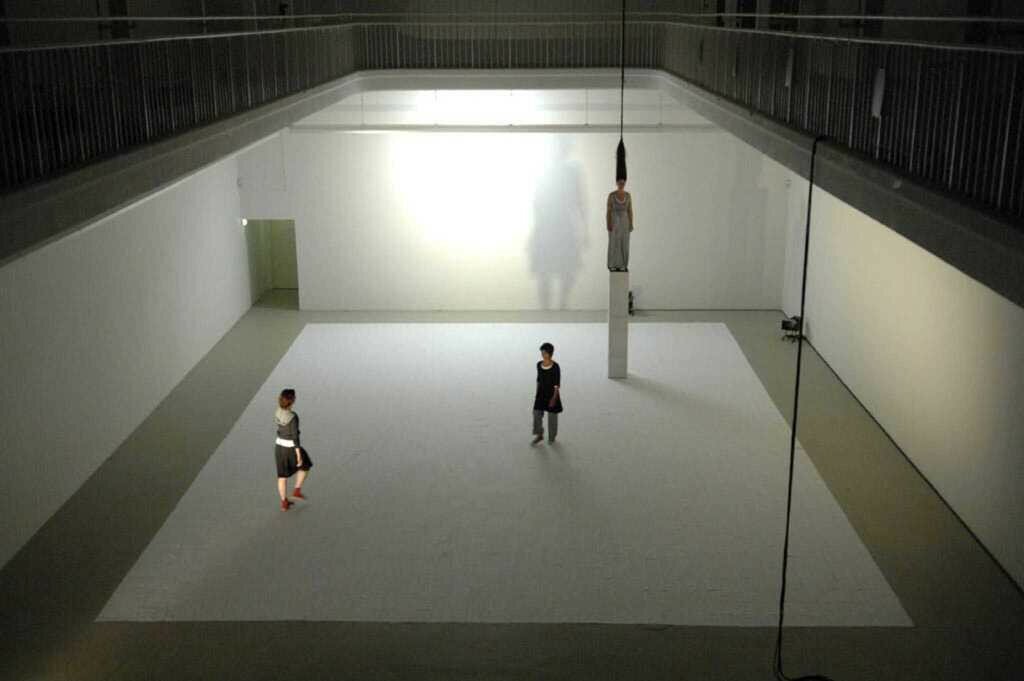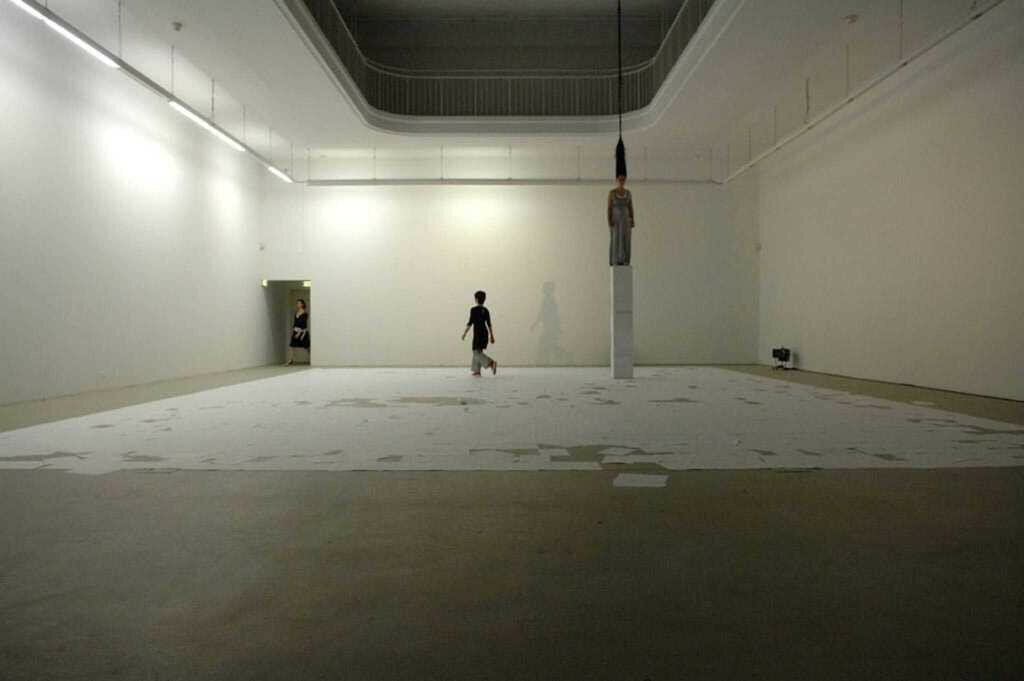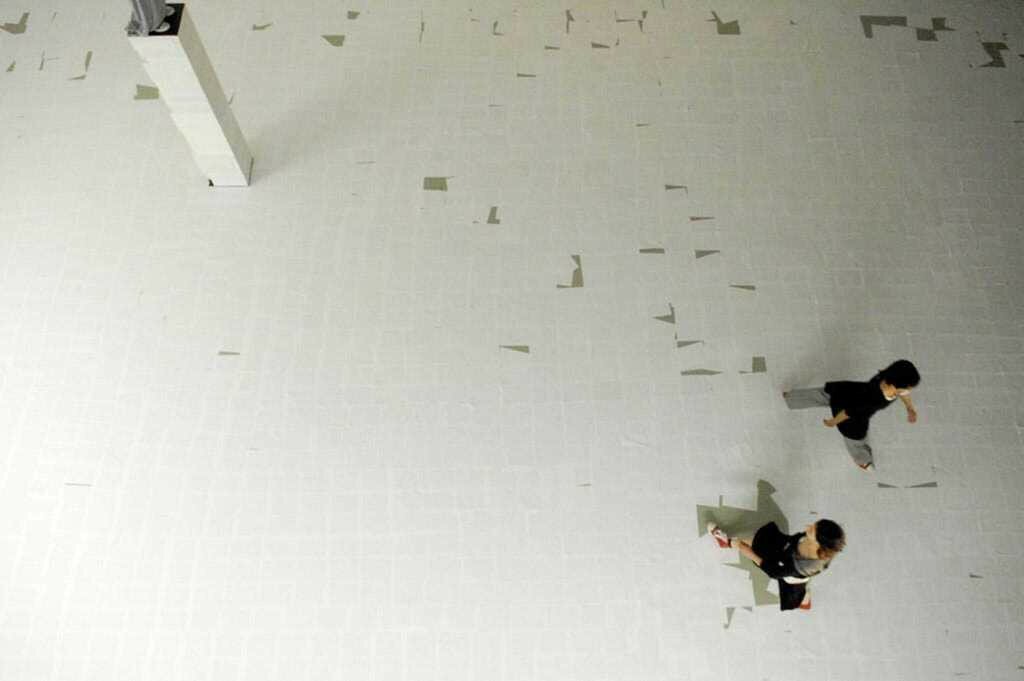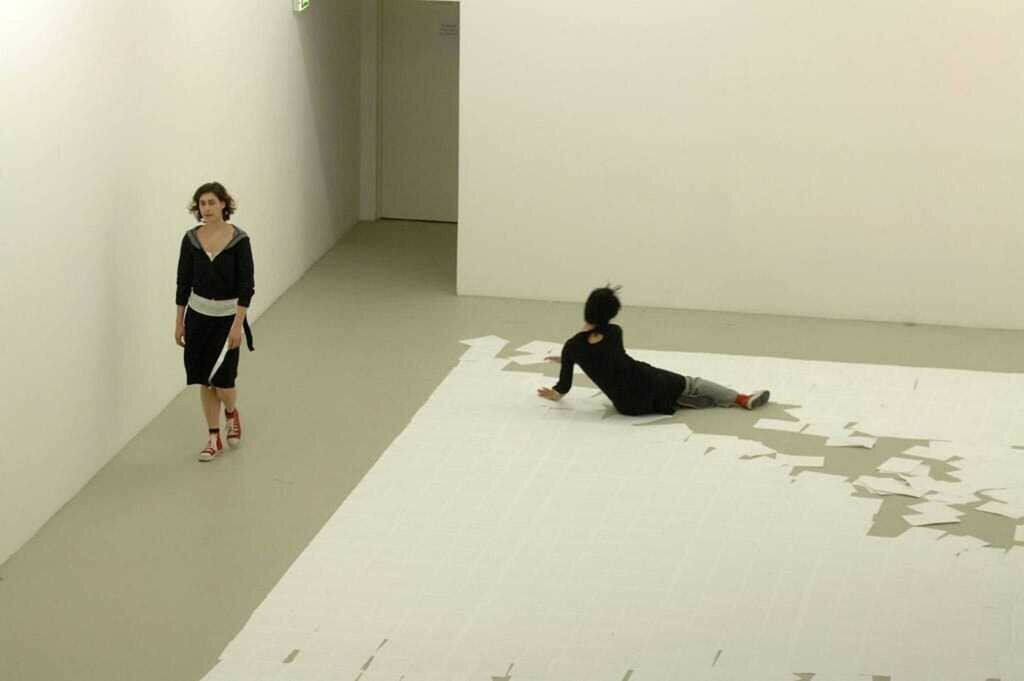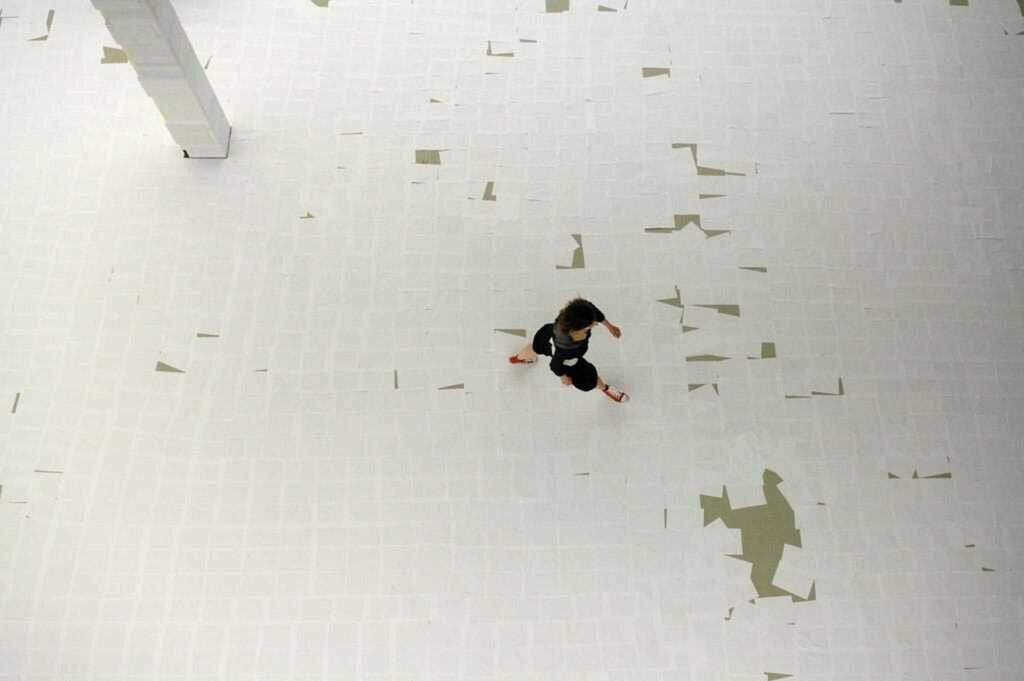This project was conceived as a continuation of two Vinovrskis’ previous works "Mittelwelle AFC” and “Which Club”. Because both theese choreographies are solo works, my main focus there was on the impact which bureaucracy has on individual. Temporary Ex / Catch 22 on the other side, takes the direction to oppose this individual aspect to faceless collectivity of bureaucratic mechanisms.
To achieve this, we tried in the first part of the evening an experiment in which structures and organisation of bureaucratic system would be confronted to structure of choreography. Here specifically was chosen choreographic structure of the solo “Which Club”, because its structure was based on the composition of a paper forms (from different countries) which are used for application for permanent Visa. We distributed the solo among 5 interprets, and we tried to find adequate systems to perform it in a collective manner.
Catch-22, its basic meaning is that if there was a rule, no matter what the rule is, there is always an exception to it. It is a mysterious regulation that is in essence a circular argument.
In the second part we extracted this “system error” or “Catch 22” that occurs very often in bureaucratic systems generally used to prolong “waiting time”, and slows down bureaucracy procedures. This was a very interesting and quite difficult phenomenon to explore. Because of its quite limiting character, “Catch 22” has brought us to some important decisions, such as using walking as one of the main and only choreographic material in the second part.
Paper was a very important prop material during the process, and it is the most used object in the piece. We use strictly A4 paper, because the interest was using the same paper that is used in bureaucracy, so called Paper Forms. In the second part of the piece the whole big surface of 16m x 10m in a form of a big A4, is covered by 1500 A4 papers, and it has same form as an A4 paper, only increased 10 times.
